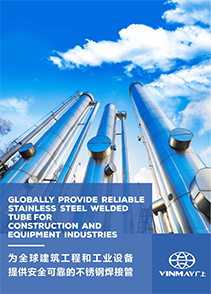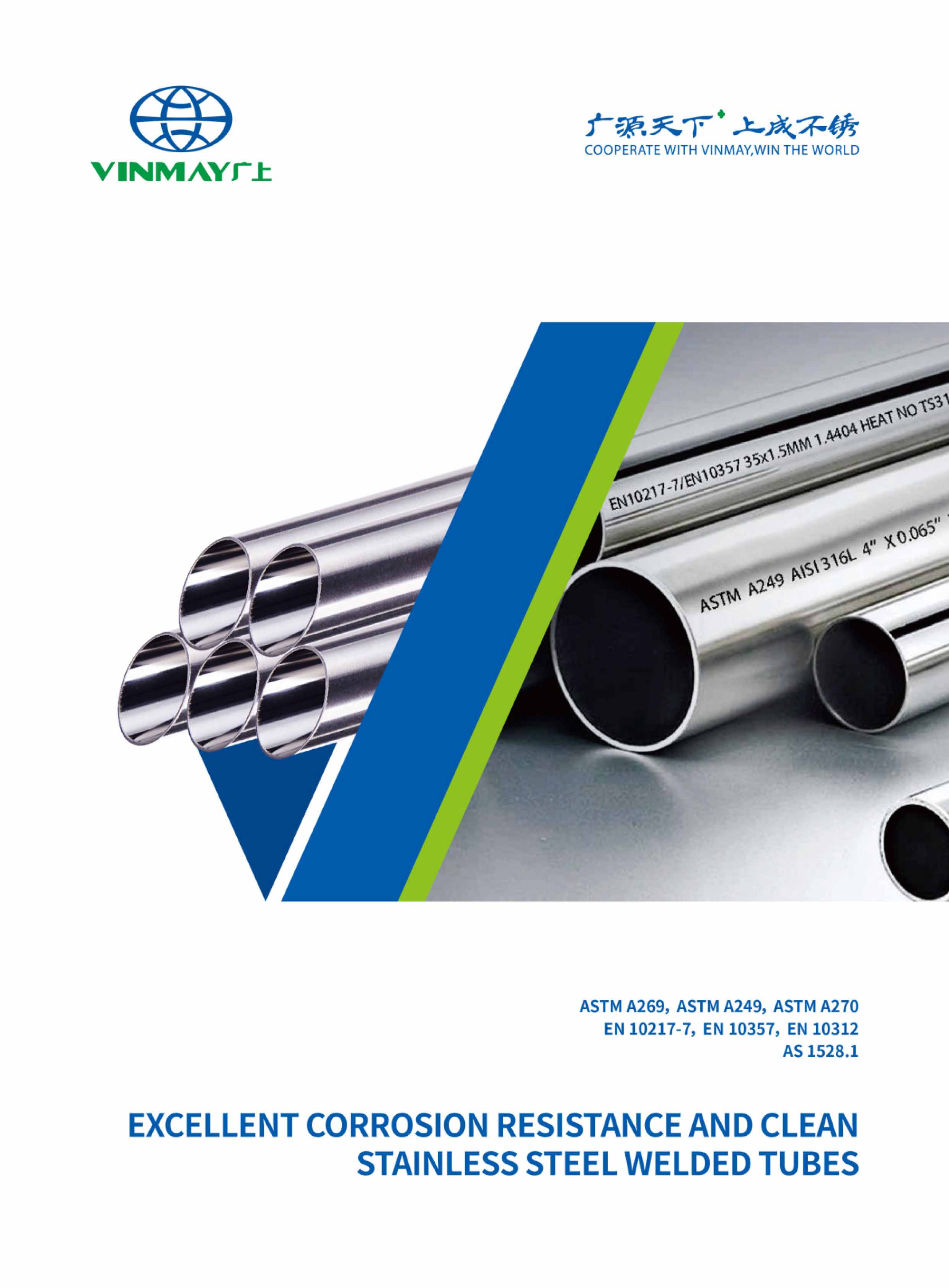
Pharmaceutical grade stainless steel tubing, primarily crafted from austenitic stainless steel like grade 316L, is integral to the biopharmaceutical sector. Known for its superior corrosion resistance and purity, this tubing features a smooth surface finish, minimizing microbial adhesion and ensuring seamless fluid flow. Adhering to stringent industry standards, it facilitates the safe transport of fluids and gases, maintaining product integrity within sterile environments. How does this tubing meet such high demands?

Pharmaceutical grade stainless steel tubing, characterized by its superior corrosion resistance and high purity standards, is essential for maintaining the integrity of pharmaceutical manufacturing environments.
This tubing is engineered from austenitic stainless steel, typically 316L, known for its exceptional resistance to corrosive agents, including acids, alkalis, and chlorides. The material's low carbon content minimizes carbide precipitation, enhancing its durability in controlled environments.
Engineered from 316L austenitic stainless steel, this tubing offers unparalleled resistance to corrosive agents and durability in controlled environments.
Critical to its application is the surface finish, which undergoes meticulous polishing processes to achieve a mirror-like smoothness. This finish reduces microbial adhesion and facilitates rigorous cleaning protocols, ensuring product safety and purity.
The uniform surface finish also plays a pivotal role in preventing corrosion, thereby extending the lifespan of the tubing in demanding pharmaceutical applications.
Pharmaceutical grade stainless steel tubing is subject to stringent industry compliance requirements to guarantee safety and efficacy in drug manufacturing processes.
Material quality standards, such as those outlined by ASTM and ASME, specify the mechanical properties, chemical composition, and surface finish necessary for these applications.
Rigorous inspection and certification processes, including non-destructive testing and validation of manufacturing practices, are critical to verifying adherence to these stringent standards.
In the domain of pharmaceutical manufacturing, adherence to stringent industry compliance requirements is paramount, ensuring the safety and efficacy of stainless steel tubing used in drug production. Regulatory bodies conduct compliance audits to verify that manufacturers meet rigorous standards. These audits assess adherence to protocols that govern the fabrication, installation, and maintenance of tubing systems, ensuring contamination control and product purity. The industry operates under guidelines from entities like the FDA and EMA, enforcing consistent quality and safety measures.
| Regulatory Body | Compliance Focus | Standard Reference |
|---|---|---|
| FDA | Contamination Control | CFR Title 21 |
| EMA | Material Integrity | EudraLex Volume 4 |
| ISO | Quality Management | ISO 9001 |
| ASME | Design Specifications | ASME BPE |
| ASTM | Testing Procedures | ASTM A270 |
Material quality is a cornerstone of pharmaceutical manufacturing, particularly in the context of stainless steel tubing. The tubing must adhere to stringent standards, ensuring it meets the high demands of the pharmaceutical environment.
Material testing is pivotal, involving rigorous examination of chemical composition, mechanical properties, and surface finish. These tests verify that the stainless steel possesses the necessary corrosion resistance and integrity. Quality assurance protocols are implemented to maintain consistency and reliability.
Standards such as ASTM A270 and ASME BPE provide extensive guidelines, dictating the precise requirements for dimensions, tolerances, and surface specifications. Compliance with these standards is essential for ensuring that the tubing performs effectively in its role, safeguarding against contamination and ensuring the purity of pharmaceutical products.
Guaranteeing the integrity and performance of stainless steel tubing in pharmaceutical applications necessitates a thorough inspection and certification process.
Inspection methods commonly employed include visual examination, dimensional verification, and non-destructive testing techniques such as ultrasonic and radiographic testing. These methods assess the tubing for defects, guaranteeing compliance with stringent industry standards such as ASTM A270, ASME BPE, and ISO 9001.
Certification processes involve the issuance of material test reports and compliance certificates, verifying that the tubing meets specified criteria for chemical composition, mechanical properties, and surface finish.
Documentation is essential, providing traceability and assurance of quality. Rigorous adherence to these standards and certification protocols guarantees that the tubing is suitable for critical pharmaceutical environments, maintaining product safety and efficacy.
The material composition of pharmaceutical-grade stainless steel tubing is critical, involving precise alloy components such as chromium, nickel, and molybdenum, which impart corrosion resistance and mechanical strength.
Selecting the ideal grade, such as 316L or 304, depends on the specific environmental conditions and chemical exposures encountered in pharmaceutical processes.
Each grade's elemental makeup directly influences its performance characteristics, ensuring compliance with stringent industry standards.
When selecting stainless steel tubing for pharmaceutical applications, understanding the alloy components and their specific roles is crucial. Alloy types determine the tubing's suitability for various processes, with each component imparting unique properties. Stainless steel alloys commonly used include 304, 316, and 316L, each offering distinct advantages. The primary elements—chromium, nickel, and molybdenum—enhance corrosion resistance, mechanical strength, and temperature tolerance.
| Alloy Type | Key Component Properties |
|---|---|
| 304 | High corrosion resistance |
| 316 | Enhanced by molybdenum |
| 316L | Reduced carbon content |
| 317L | Superior pitting resistance |
Chromium guarantees a passive oxide layer for protection, while nickel adds ductility. Molybdenum further fortifies against pitting. Selecting the appropriate alloy involves considering the intended application, environmental exposure, and compliance with stringent industry standards.
Selecting the ideal grade of stainless steel tubing for pharmaceutical applications hinges on a thorough understanding of material composition and specific performance requirements.
Material selection is vital, guaranteeing ideal corrosion resistance and mechanical integrity. The grades typically used in this sector include:
Each grade serves distinct functional needs, with 316L being predominant due to its excellent balance of properties.
Proper selection guarantees compliance with stringent industry standards, assuring product safety and reliability.

Achieving the highest standards of pharmaceutical-grade stainless steel tubing involves meticulous attention to manufacturing processes and rigorous quality control measures.
Manufacturing techniques such as precision welding, seamless extrusion, and cold working are employed to guarantee uniform tube wall thickness and ideal surface finish. These processes enhance corrosion resistance and mechanical strength, vital for maintaining the integrity of the tubing in pharmaceutical environments.
Precision welding, seamless extrusion, and cold working ensure optimal tube wall thickness and surface finish for pharmaceutical applications.
Quality assurance protocols include non-destructive testing methods like ultrasonic and eddy current testing to detect any imperfections. Metallurgical analysis verifies compliance with stringent industry standards, while dimensional verification guarantees accurate sizing and fit.
The implementation of extensive quality control systems guarantees that each batch of stainless steel tubing meets the rigorous demands of pharmaceutical applications, thereby assuring reliability and safety.
Pharmaceutical-grade stainless steel tubing plays a critical role in numerous applications within the pharmaceutical industry. Its material properties guarantee compatibility with stringent biopharmaceutical applications, where maintaining sterile environments is paramount. The tubing supports processes that require high corrosion resistance and cleanliness.
This precision-engineered tubing is indispensable for maintaining the purity and efficacy of pharmaceutical products.
See Also: Stainless Steel Pipe Applications in Various Industries

Due to its exceptional durability and resistance to corrosion, pharmaceutical-grade stainless steel tubing offers numerous benefits in biopharmaceutical applications.
This tubing material guarantees long-term integrity and minimizes contamination risks due to its superior corrosion resistance, even in highly reactive environments.
Its smooth internal surface finish enhances flow efficiency by reducing friction, promoting consistent fluid dynamics critical for precise process control.
In addition, stainless steel's inherent strength supports high-pressure applications, maintaining structural reliability under rigorous operational conditions.
The material's compatibility with sterilization protocols, including steam sterilization and chemical sanitization, guarantees compliance with stringent industry standards.
Ensures adherence to rigorous industry standards through compatibility with steam and chemical sterilization protocols.
Moreover, its non-reactive nature mitigates leaching risks, preserving product purity.
These properties collectively enhance operational reliability and process efficiency in pharmaceutical manufacturing settings.
Related Article: How Medical Stainless Steel Tubing
Stainless steel tubing prevents contamination through its smooth, non-porous surface, resisting bacterial adhesion. Its corrosion resistance guarantees long-term integrity in pharmaceutical processes. These stainless steel benefits provide reliable contamination prevention, maintain stringent hygiene standards, and secure product purity.
Routine inspections and preventive measures are essential. Corrosion resistance, surface finish quality, and dimensional integrity demand attention. Ensuring these properties, through precise evaluation, safeguards operational efficiency and hygiene in environments where control over contamination is paramount.
Specific cleaning protocols for pharmaceutical tubing involve rigorous cleaning methods and sterilization techniques. These processes guarantee the removal of contaminants, utilizing methods like CIP (Clean-In-Place) and SIP (Sterilize-In-Place), aligning with industry standards for material properties.
Tubing acts as the lifeblood of sustainable practices, ensuring eco-friendly materials flow seamlessly. By utilizing recyclable and corrosion-resistant materials, such as stainless steel, it minimizes waste and energy consumption, thereby enhancing the environmental sustainability of pharmaceutical operations.
Conducting a cost analysis of pharmaceutical-grade tubing reveals higher initial expenses due to stringent material properties and manufacturing standards. Budget considerations must account for long-term benefits, such as durability and reduced contamination risks, to ensure efficient resource allocation.
Pharmaceutical-grade stainless steel tubing acts as the lifeblood in biopharmaceutical environments; its seamless surfaces, akin to polished mirrors, reflect purity and precision. Crafted from resilient 316L austenitic stainless steel, it stands as an impenetrable fortress against corrosion, safeguarding the integrity of transported substances. Adhering to rigorous standards, this tubing is a meticulous symphony of engineering excellence, ensuring sterility and efficient flow—a crucial artery within the pharmaceutical industry's complex circulatory system, delivering life-saving treatments with unwavering reliability.



